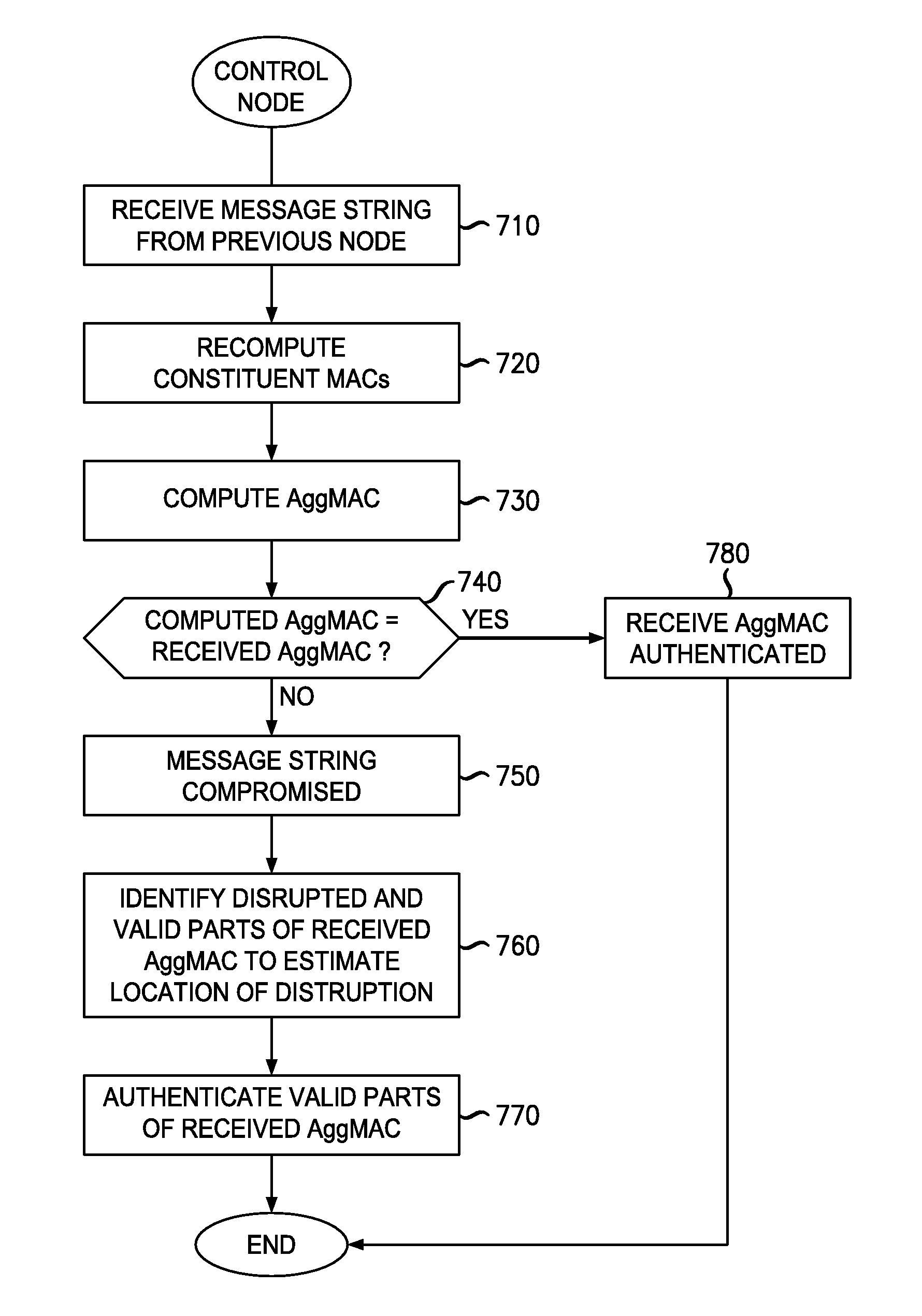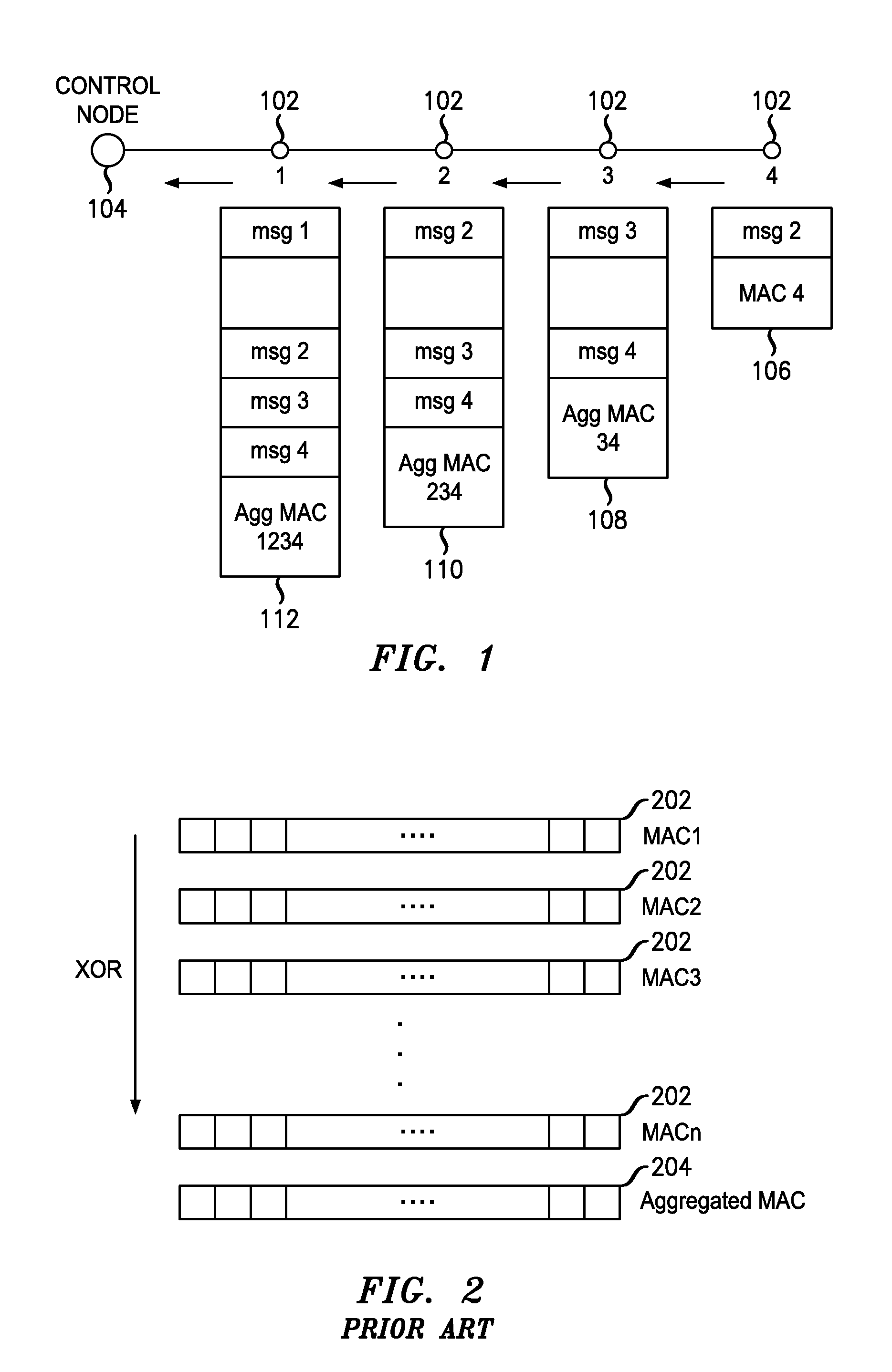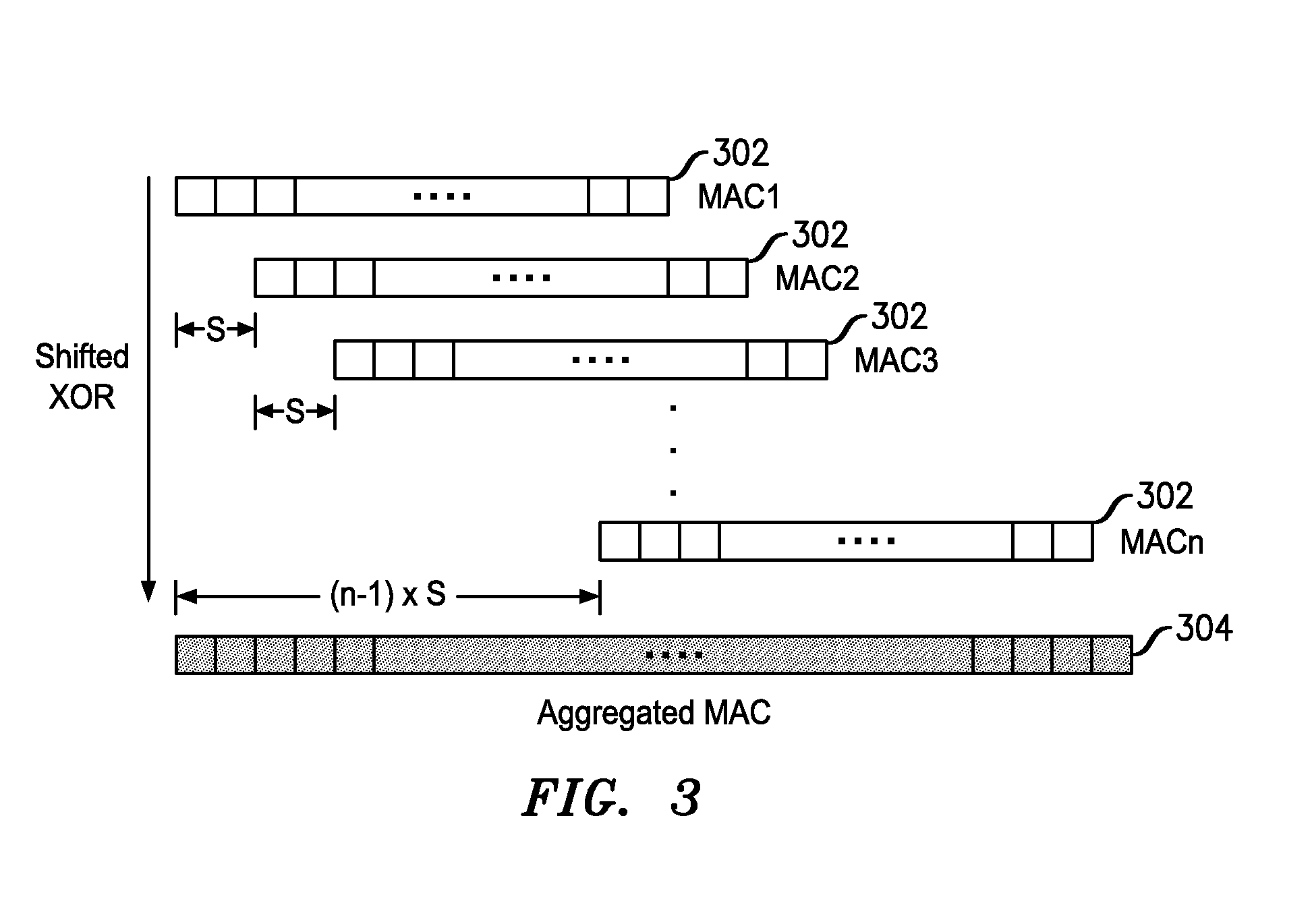MAC Aggregation Resilient To Denial-Of-Service Attacks For Use In A Multi-Node Data Network
a multi-node data network and aggregation technology, applied in the field of data security, can solve problems such as significant overhead, and achieve the effect of reducing network overhead and strong resilience to denial-of-service attacks
- Summary
- Abstract
- Description
- Claims
- Application Information
AI Technical Summary
Benefits of technology
Problems solved by technology
Method used
Image
Examples
Embodiment Construction
)
[0018]FIG. 1 illustrates an exemplary message sequence in a multi-node data network 100 utilizing MAC aggregation. The multi-node data network 100 includes a plurality of sending nodes 102 (four shown) operably connected to a control node 104. For convenience, the sending nodes 102 are identified as “node 1,”“node 2,”“node 3” and “node 4” in relation to their proximity to the control node 102. The sending nodes may comprise, generally, any system, server, router, application or function adapted to communicate data with other nodes of the multi-node data network 100. The control node may comprise, generally, any system, server, router, application or function adapted to receive and authenticate data received from the sending nodes.
[0019]Most typically, the sending nodes and the control node reside in separate physical devices or structures distributed throughout the network 100. For example and without limitation, the sending nodes may comprise or be associated with multiple sensors...
PUM
 Login to View More
Login to View More Abstract
Description
Claims
Application Information
 Login to View More
Login to View More - R&D
- Intellectual Property
- Life Sciences
- Materials
- Tech Scout
- Unparalleled Data Quality
- Higher Quality Content
- 60% Fewer Hallucinations
Browse by: Latest US Patents, China's latest patents, Technical Efficacy Thesaurus, Application Domain, Technology Topic, Popular Technical Reports.
© 2025 PatSnap. All rights reserved.Legal|Privacy policy|Modern Slavery Act Transparency Statement|Sitemap|About US| Contact US: help@patsnap.com



